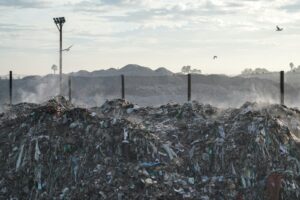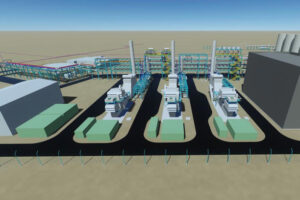Can we turn sewage ‘sludge’ into something valuable?
Over the past few years, I have become an academic expert in ‘sewage sludge’ – the residual, semi-solid mix of excrement packed with microorganisms that is left behind within wastewater treatment plants.
Every year the UK alone produces approximately 1.4m tonnes of the stuff. About 80% of it is spread on fields as manure, but this still leaves us with a headache – what do we do with the rest – asks Evina Katsou, senior lecturer in Water Engineering, Brunel University London.
Despite widespread recognition that a proper management plan is needed, there is one major hurdle that still needs to be overcome. Sludge is near-worthless, in terms of monetary value, and sewage companies sometimes struggle even to give it away.
A big part of the problem is that sewage sludge from different treatment plants can have wildly different nutrient values. Not having a product with consistent characteristics significantly undermines its value, especially for agriculture, as farmers could never be sure what it is they’re actually buying.
Another problem is that when stacked up against the competition, it’s actually quite poor as fertiliser. Both food waste and manure from farm animals serve the purpose much better and contain fewer pollutants that can find their way into the food chain.
So, what should we do with the sludge? After all, we have to do something.
In many cases across Europe, the water utility companies simply pay for final disposal or give it away free to farmers – a cost which is no doubt passed on to the farmers’ customers. Even in cases where the utilities manage to actually sell the treated sewage sludge, they do so at a rock bottom price of between £1 and £2 per tonne. That’s a very poor return when you consider the cost of processing a tonne of dry sludge can be £200 or more.
Let it burn!
What about just burning it then? It’s not very environmentally friendly, sure, but could it be a solution? The burning of feedstock such as sewage sludge results in the production of energy which is measured in calories. The more calories, the more energy that is produced.
Well, even “dewatered” sludge contains approximately 75% water, which means energy is required to evaporate it. And even once it’s dried out, 1 kg of dried sludge contains only 3,300 kilocalories (kcal) of energy – far less than the 4,500 kcal found in 1 kg of food waste, or even the 8,300 kcal found in 1 kg of car tyres. Consequently, incineration is not an attractive option for sewage sludge.
Luckily though, when we look at sludge as the sum of its parts, the picture becomes slightly more optimistic.
Around 2 to 4% of sludge contains phosphorus, from which struvite – the substance kidney stones are made out of – can be recovered and sold for as much as £300 per tonne for use as fertiliser. Calcium carbonate too is found in significant quantities.
The cellulose contained in flushed toilet paper is also recoverable for those with the will to recover it, as is the organic content of sewage which can be recovered as bioplastic, a valuable alternative to conventional, petroleum-derived plastics. Both are expensive to extract, however.
Regulating the competition
The adoption of extraction technology could also be helped along by increasingly strict limits on the use of phosphorus in fertilisers. In fact, a recent EU proposal to regulate fertilisers included manure and food waste collected at source, but excluded compost derived from sludge. Sewage sludge contains phosphorus, mostly from detergents used for washing clothes and dishes. This phosphorus is much more valuable than sludge and could eventually be used in agriculture.
Could we therefore be about to see the birth of a booming sludge industry? Could wastewater treatment plants become producers of brown gold?
Maybe. Maybe not. There are currently a plethora of directives, codes of practice, quality protocols, publicly available specifications and assurance schemes covering the different aspects of sludge, each of which adds an additional layer to an already complex legislative framework. Such complexity is a deterring factor for investors and makes attracting new players tricky.
However, there is enough value in sludge that, with the right will and effort, we can start to put it to really positive use.
While few people like to think about what happens after we pull the flush, working out what to do with the waste is of real importance. We need to work out how best to extract the value out of sludge, because at the moment it’s literally being flushed down the toilet.
Photo credit – Max Pixel
This article is republished from The Conversation under a Creative Commons license. Read the original article here.















